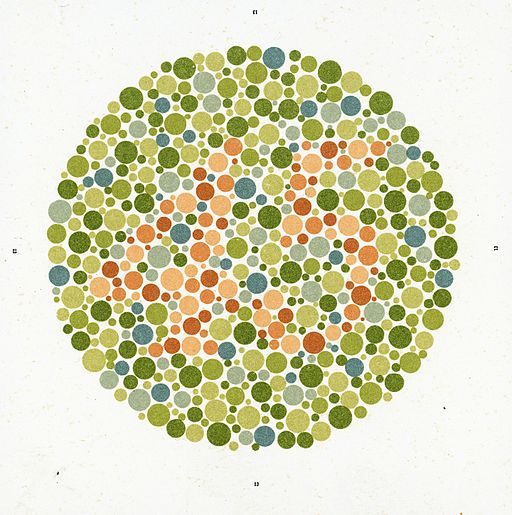We’ve known for a while that child number 1 (male) is red-green colour blind. This comes as no surprise – with his maternal grandfather being the same. The genes responsible lurk on the X-chromosome. That means mother is a carrier of red-green colour blindness, and child number 1 had a 50:50 chance of picking up her faulty X-chromosome. It also means that child number 2 (also male) has a 50:50 chance too, though it’s too early to tell whether he is the same.
For the most part, the colour blindness is of negligible consequence. Sometimes it creates some amusement and puzzlement – such as when he asks for the “green one” when there simply isn’t a green one there. Sometimes it’s intriguing, though. He clearly sees colours in a different way to me, and appears to be able to distinguish between colours that I can’t. That makes “Colour blindness” a poor name for it – I would say “Alternative colour perception” would be more appropriate.
For example, a couple of weeks ago I was tasked with controlling the screens at church – basically running the powerpoint-like software* on the computer at the back of the church and pressing the buttons to put the right words or media on the screen at the right time. Child number 1 likes to help me in this. Now, the computer-at-the-back has a screen, and what is on it should be the same as what is shown to the congregation. And it looks the same to me. But not to child number 1. He asked me why the blank screen at the front of the church was black, while the blank screen in front of us was red. They both looked an identical deep red colour to me, but clearly not to him.
Clearly, then, the light that the two screens are putting out does not have the same spectral content.
Another example comes from our time in Australia at the beginning of last year. Child number 1 was adamant that the Perth traffic lights have a ‘red’ colour that is different from the ‘red’ colour of NZ traffic lights. I didn’t notice any discernable difference, but to him it was there. Or so he says.
It’s a bit hard to interpret this, but my point is that seeing colour is a tricky concept. Light from an object arriving at our eye contains a continuous range of different wavelengths, but we detect these wavelengths with just three colour-sensors, the ‘red’, ‘green’ and ‘blue’ cones. Thus we lose a great deal of information about the light. Two very different sources of light, giving very different powers at various wavelengths, might appear identical, because they trigger the same responses in our three colour-sensors. However, electronic sensors are not so limited. They can be made with a huge range of different detectors to measure the light across the spectrum. Having a hundred detectors, each with a different response, would be like someone who had a hundred different types of cones in their eye. Imagine the colours that could be seen then! Detailed resolution of different wavelengths is basically the idea of spectroscopy – being able to work out something about the source of the light based on the detailed spectrum of wavelengths it has. For example, your green camouflage paint might look the same colour green as the trees surrounding it, but measure the full spectrum of it and it could appear very different. It might then defeat a human eye, but not an electronic one.
Colour perception is tricky.
*Not actually MS Powerpoint. We use ProPresenter – something that actually works.
